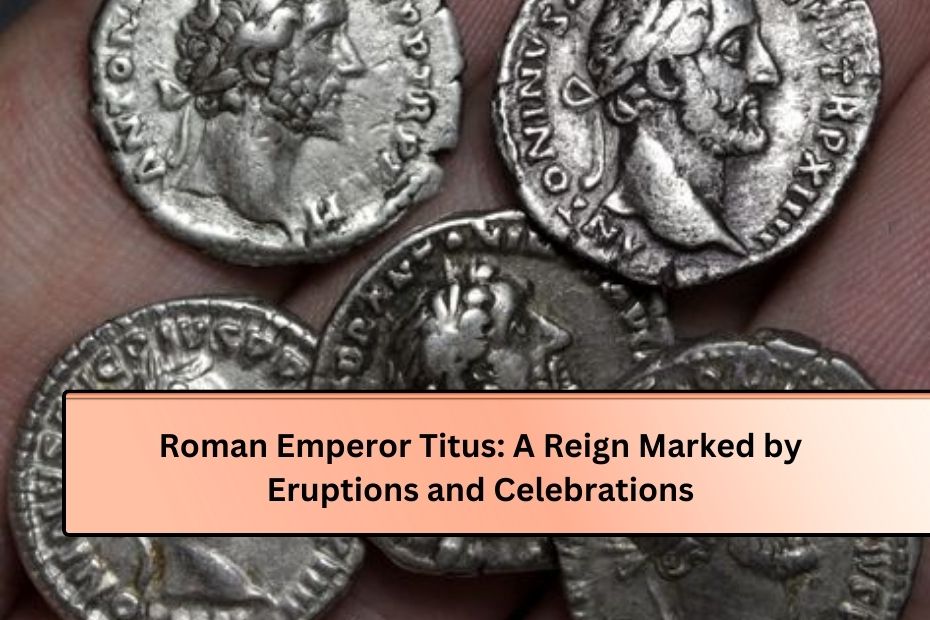Roman Emperor Titus, who reigned from A.D. 79 to A.D. 81, had a short rule marked by significant events and achievements. One of his memorable contributions was the issuance of special coins, including one minted to celebrate the opening of the Colosseum. This particular coin, produced in A.D. 80, features a design commemorating Rome’s grandeur. As history notes, Titus’s time on the throne witnessed major incidents, such as the catastrophic eruption of Mount Vesuvius, which led to the destruction of Pompeii and Herculaneum. In this article, we’ll explore Titus’s short reign, the Colosseum’s monumental opening, and the historical significance of these special coins.
| Aspect | Details |
|---|---|
| Emperor | Titus |
| Reign | A.D. 79 to A.D. 81 |
| Significant Events | – Eruption of Mount Vesuvius in A.D. 79 – Opening of the Colosseum in A.D. 80 |
| Eruption of Vesuvius | – Destroyed the towns of Pompeii and Herculaneum – Preserved artifacts for future study |
| Impact of Eruption | Viewed as a bad omen; led to sacrifices and atonements in Rome |
| Colosseum | – Also known as the Flavian Amphitheatre – Opened with 100 days of games and celebrations |
| Construction Funding | Funded by spoils from the wars against the Jewish Revolt, including the sacking of Jerusalem |
| Celebrations | Included gladiator games, parades of exotic animals, and public spectacles |
| Commemorative Coins | Minted to celebrate the Colosseum’s opening; included silver denarii with various designs |
| Rare Coin Example | – Silver denarius featuring an elephant – Estimated value: £2,000 to £2,500 ($2,512 to $3,140) |
| Cultural Significance | Coins symbolize Roman power and achievements; Colosseum remains an iconic historical site |
| Legacy | Titus’s brief reign marked by monumental achievements and events still celebrated in history |
Roman Emperor Titus: A Brief Reign with Lasting Impact
Titus’s two-year reign may have been short, but it was marked by impactful events and lasting legacies. Let’s dive into what made his rule notable:
- The Eruption of Mount Vesuvius
In A.D. 79, Mount Vesuvius erupted, burying the cities of Pompeii and Herculaneum in ash. Although tragic, this event preserved these sites, providing modern archaeologists a window into life in ancient Rome. - The Colosseum’s Grand Opening
In A.D. 80, Titus presided over the opening of the Colosseum, known as the Flavian Amphitheatre. This architectural marvel hosted grand events, including gladiator games and exotic animal parades. - Special Commemorative Coins
To mark the opening of the Colosseum, special coins were minted, symbolizing Roman power and the achievements of the Flavian dynasty.
The Eruption of Mount Vesuvius: A Defining Event of Titus’s Reign
Pompeii and Herculaneum: Cities Lost and Found
Mount Vesuvius erupted shortly after Titus took the throne, devastating Pompeii and Herculaneum. These towns were both destroyed and preserved by volcanic ash, capturing a moment in history that would intrigue the world centuries later.
- Historical Significance
The eruption not only shocked the Roman Empire but also left behind perfectly preserved artifacts, homes, and artwork, offering a rare look into Roman life. - Rome’s Reaction to the Disaster
Romans saw this disaster as a bad omen, with sacrifices and ceremonies performed across the empire to appease the gods.
The Colosseum: A Monument of Roman Power
The Flavian Amphitheatre’s Construction
The Colosseum, funded by Emperor Vespasian’s victories in Judea, was nearly completed by Titus’s reign. Its grand opening symbolized Roman strength and provided a venue for celebrations, games, and entertainment.
- Celebrations and Games
The Colosseum’s opening was marked by 100 days of festivities, including gladiator battles, exotic animal parades, and public spectacles. - Symbol of Roman Engineering
With its massive structure and intricate design, the Colosseum became a marvel of Roman engineering and remains one of the world’s most iconic historical sites.
Commemorative Coins of Titus: Symbols of Legacy
The Elephant Coin: A Rare Roman Artifact
During the Colosseum’s opening in A.D. 80, special coins were minted to honor the event. One of the rarest examples is a silver denarius featuring an elephant, symbolizing strength and grandeur.
- Design and Rarity
This coin depicts Emperor Titus’s head and an elephant, with the Emperor’s face turned left—a rare detail. The coin is valued between £2,000 and £2,500, adding to its allure among collectors. - Symbolic Meaning
The elephant design was meant to showcase the power and magnificence of the Roman Empire, adding a layer of prestige to the Colosseum’s opening events.
Conclusion
Although Titus ruled for only two years, his impact is still felt through monumental events and achievements like the Colosseum’s opening and the special coins issued to commemorate it. These coins, especially the rare elephant coin, serve as timeless symbols of the Roman Empire’s grandeur and Titus’s brief yet memorable reign. They continue to be admired, telling a story of Rome’s power, culture, and enduring legacy.
FAQs
1. Who was Emperor Titus, and why is his reign significant?
Titus was a Roman Emperor who reigned from A.D. 79 to A.D. 81. Despite his short rule, he is remembered for overseeing major events, like the eruption of Mount Vesuvius and the opening of the Colosseum, which had lasting impacts on Rome and world history.
3. Why was the Colosseum built, and what events took place during its opening?
The Colosseum, originally known as the Flavian Amphitheatre, was built to display Roman power and host grand public events, funded by spoils from the Jewish Revolt. Its opening in A.D. 80 included 100 days of gladiator games, animal parades, and grand celebrations.
4. What were the commemorative coins of Titus, and why were they issued?
The coins were minted to celebrate the Colosseum’s opening. These special coins, including the rare silver denarius with an elephant design, symbolized the might and wealth of Rome and marked significant events under Titus’s rule.
5. What is special about the elephant coin issued during Titus’s reign?
The elephant coin is rare, with a unique design where Titus’s head faces left. Valued between £2,000 and £2,500, it is a prized artifact for collectors and a symbol of Rome’s grandeur during the Colosseum’s debut.

